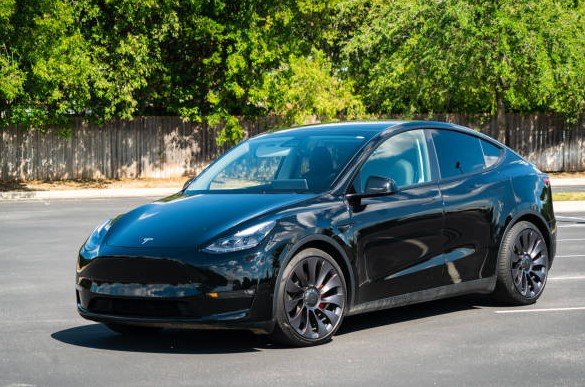Tesla has recalled thousands of its Model Y vehicles in Australia due to a software glitch that could cause the driver’s side window to close with too much force. This issue, affecting all 2025 variants, raises injury risks if a body part gets caught, and owners can fix it through a simple over-the-air update.
What Sparked the Recall
The Australian government announced the recall over the weekend, targeting 7,301 Tesla Model Y cars sold in the country. The problem lies in the automatic window system on the driver’s side, which might fail to detect obstacles like fingers or arms.
This fault could lead to the window pinching with excessive force, potentially causing cuts, bruises, or worse. Officials from the federal transport department stressed that the software does not always trigger the safety reversal as it should.
Owners started receiving notices from Tesla, urging them to check for updates. The recall comes amid growing scrutiny of electric vehicle safety features.
Details of the Software Issue
The glitch affects the window’s auto-reverse function, a key safety feature meant to stop and reverse if something blocks the path. In these vehicles, the system may not respond quickly enough, allowing the window to keep closing hard.

Experts say this type of problem often stems from sensor calibration errors in the software. Tesla has confirmed that all 2025 Model Y models are impacted, regardless of trim or options.
Similar issues have popped up in other markets. For instance, a recall in New Zealand hit the same model for the exact fault, showing this is not just an isolated case.
To highlight the scope:
- Affected Vehicles: All 2025 Tesla Model Y variants in Australia.
- Number Involved: 7,301 units.
- Risk Level: Increased chance of injury from pinching.
- Fix Timeline: Immediate over-the-air update available.
This marks the second Tesla recall in Australia for 2025, following a March issue with power steering in fewer than 300 cars.
How Owners Can Fix the Problem
Tesla makes the repair easy with its over-the-air technology. Owners do not need to visit a service center; they can download the update directly to their vehicle.
To apply the fix, connect the car to Wi-Fi and check for software version 2025.28 or later, which addresses the window fault. Tesla will contact affected owners via email or the app to guide them through the process.
If the update fails or owners face issues, Tesla support is ready to help remotely. This method has proven effective in past recalls, cutting down on downtime for drivers.
Many users on social media report quick resolutions, with some saying the update took under 30 minutes. Always ensure the car is parked safely before starting the process.
Comparison to Past Tesla Recalls
This recall echoes a major one in the United States back in 2022, where nearly 1.1 million Tesla vehicles faced a similar window pinching problem. That event involved Models 3, S, and others, and was fixed via software too.
In Australia, Tesla has seen 17 recalls since 2021, covering issues from steering to battery concerns. The current one is the largest this year, but smaller than some global efforts.
Here’s a quick look at recent Tesla recalls in Australia:
| Year | Model(s) Affected | Issue | Number of Vehicles | Fix Method |
|---|---|---|---|---|
| 2025 | Model Y | Window software fault | 7,301 | OTA update |
| 2025 | Model Y and 3 | Power steering | 297 | Service visit |
| 2024 | Various | Battery safety | Over 5,000 | OTA and inspection |
| 2022 | Multiple | Window pinching (similar) | Thousands | OTA update |
These events show a pattern of software-related fixes, which Tesla handles efficiently compared to traditional carmakers.
Impact on Tesla Owners and the Market
For owners, the main worry is safety, especially for families with kids who might play with windows. No injuries have been reported yet from this specific fault, but the potential exists.
Tesla’s stock took a slight dip after the news, but experts predict quick recovery as the fix is straightforward. In Australia, the Model Y remains a top-selling electric SUV, with sales booming despite recalls.
Broader trends point to more software scrutiny in EVs. Regulators worldwide are pushing for better testing to prevent such glitches.
This recall also highlights Tesla’s advantage in remote updates, saving time and money for everyone involved.
Why This Matters for Electric Vehicle Safety
As electric cars grow in popularity, software plays a bigger role in safety. This incident reminds makers to prioritize reliable systems that protect users in everyday scenarios.
Industry watchers note that while recalls sound alarming, they often lead to stronger products. Tesla continues to lead in innovation, but must keep building trust through prompt actions.
Looking ahead, expect more updates as vehicles become smarter. For now, this fix keeps drivers safer on Australian roads.
Share your thoughts: Have you dealt with a Tesla recall? Drop a comment below or share this article to spread the word on vehicle safety.








